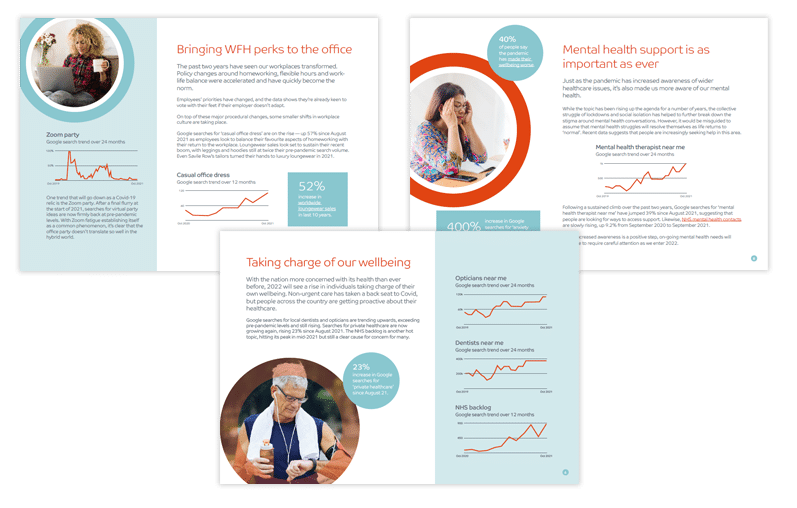Our recent Wellbeing Trends report reveals how our home and work lives are more connected than ever before. While hybrid working models and new workplace policies have been largely positive for employees, they do introduce new challenges in supporting the hard to reach.
With employees often feeling reluctant to change, how can employers help their people engage with wellbeing both in and outside the new-normal workplace?
Watch a summary of this blog
A whole-of-workforce approach
Since the start of the pandemic our working habits have had to adapt to individual circumstances, so it makes sense that our wellbeing support should too. A whole-of-workforce approach means introducing flexible ways for employees to engage with their health and endeavouring to provide equal access to support.
While health and fitness topics experience an inevitable boost each January thanks to New Year’s resolutions, long-term behaviour change is far more complex. The challenge for workplaces will be keeping their people engaged with wellbeing on a consistent basis — only then will it have a significant impact on employee happiness, productivity and absence rates.
Use the three Vs to guide your employee wellbeing plan
It’s important to remember that each employee will be at a different stage of the process, but each is equally important. To encourage lasting behaviour change, make sure your wellbeing initiatives are visible, varied and versatile.
Make employee benefits visible
To maximise engagement, employers should ensure their wellbeing activities are consistently visible across the business. This could be a weekly email reminder, a post on your intranet platform or physical posters in the workplace.
The concept of social proof tells us that people use their peers’ behaviour as a basis for their own: an update about the office rugby team or simply the sight of employees leaving work in their gym kit can act as gentle reminders which help foster a health-conscious culture.
Keep your wellbeing activities varied
Just as we all have our specialties in the workplace, employees will have their own strengths when it comes to their lifestyle too.
The aim shouldn’t be to involve every single employee with workplace wellbeing activities, but rather to offer people the opportunity to tap into health and wellbeing in a way that suits them.
A variety of small initiatives across areas such as mental health, stress management, back care and physical fitness will better serve your workforce than one complex activity in a single field.
Make your wellbeing programme more versatile
Try to build some flexibility into how your wellbeing solutions are delivered. This could mean a class is held both in person and online, or gym vouchers are valid at a national chain rather than a local fitness club. Each solution doesn’t have to be perfect but focusing on versatility will help you get the most value out of your investment in wellbeing.
More advice from our latest report
Our Wellbeing Trends report reveals how workplaces are changing as we enter 2022, including employee expectations around hybrid working, mental health support and sustainability.
The report uses data from Google search trends, the ONS and our exclusive workplace surveys to give employers a head start on wellbeing for the coming year.
